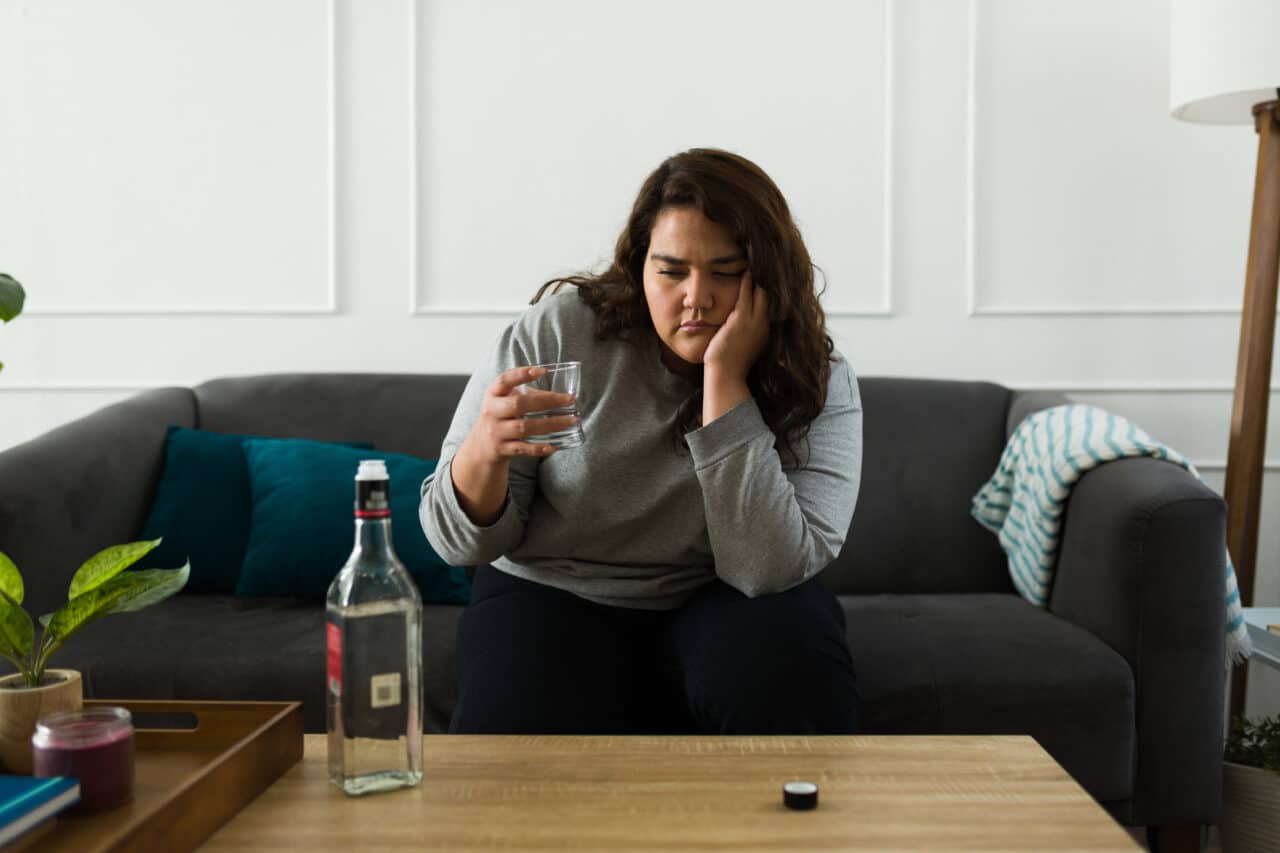When you picture someone struggling with alcohol, what image comes to mind? Most people think of a man having issues with alcohol as common media tropes depict a male stereotype when illustrating alcoholism. In reality, alcoholism among women is rapidly increasing.
In the past, men were two or three times more likely to drink than women of the same age. However, of men and women now, the ratio of binge drinking alcohol has narrowed to 1. A recent study showed women in 12 to 17 years are 61.5% more likely to have alcohol use disorder than their male peers.
Alcohol consumption affects women differently than men, and the rise in alcohol abuse among women comes with many heightened health and safety concerns.
Why are women drinking more, and at what risk?
The rise of alcoholism among women didn’t happen overnight. Instead, it is a combined result of increased acceptance of drinking, including targeted marketing campaigns, and the desire to cope with anxiety and stress among women.
Women Can “Have it All”
In the early 20th century, drinking was primarily considered a male activity, as women generally stayed out of the public sphere of alcoholism. Women were mostly confined to the home, away from the social drinking scene. The rise of feminism meant women gained access to spaces that were formerly unwelcome to them. Female empowerment also challenged previously gendered beliefs about drinking. Women could enjoy alcohol socially too.
While women gained independence, however, they also felt increased pressure to do more. “A woman’s responsibilities today are immense, and our culture tells them that they should be able to handle and have it all,” says Leah Parker, Licensed Professional Counselor, and Clinical Coordinator for Bradford’s A Reprieve for Women. “For many women, alcohol is a way to cope with that pressure and can quickly become their solution for how to get by with everything they have on their plate.”
Glamorizing Alcohol Culture
With more women drinking alcohol, marketers gained an opportunity. In the modern-day, feminized advertisements for alcohol bombard women. In fact, women are now the main target for alcohol advertising, with beverage companies introducing more and more sweet, low-calorie cocktails. Social media ads and influencers often promote alcoholic beverages as a must-have for a party or sophisticated life.
“Alcohol culture is only partially an appeal to vanity,” says Parker. “Women often feel they have to be of a certain status while navigating multiple competing identities, such as an employee, mother, and caretaker.”
Companies have jumped on these anxieties by creating kitschy products with phrases like “mommy juice” and “wine o’clock” and even alcohol-bottle-shaped jewelry and bags. Women of all ages are using jokes like these to cope with the anxieties of everyday life and justify their drinking habits.
Covid’s Impact on Women’s Alcohol Abuse
Unfortunately, alcohol abuse has multiplied during the pandemic. The U.S. National Pandemic Emotional Impact Report stated that women especially had experienced higher rates of sleep disruptions, anxiety, and changes in productivity since the pandemic began. Research shows that women also reported a 42% increase in heavy drinking days during the pandemic. Even as the country returns to pre-pandemic life, the damaging effects of alcohol abuse will likely be long-lasting for many women.
Risks of Alcohol on Women’s Health
While alcohol abuse is unhealthy for anyone, biological differences mean the effects of excessive alcohol consumption occur earlier in women than they do in men. For example, women typically have a lower body mass than men and, on average, also have less water in their bodies. Because alcohol largely settles in water, women experience higher blood alcohol content than men. In other words, alcohol is more concentrated in the female body. Women experience more significant short-term harm to their bodies than men when drinking as a result. Long-term risks multiply over time.
Alcoholism in women materializes differently in the body, and symptoms can range from psychological to physical, including:
Alcoholic Hepatitis: Liver damage is more common among women who abuse alcohol over time. Alcohol hepatitis can occur over time. Alcohol hepatitis is inflammation of the liver from drinking over time. People with alcohol hepatitis must stop drinking altogether, as additional damage can lead to death.
Brain Damage:
Women who binge drink are disproportionately at risk for brain damage over time. Research suggests that brain damage occurs most frequently from binge drinking during adolescence. Girls who reported binge drinking performed worse on a memory test and had more issues with decision-making. The same study found that boys who binged did not experience the same long-term damage.
Alcoholic Cardiomyopathy:
Even if a woman drinks less than a man her size, she may still be at higher risk for heart disease than he is. Heavy drinking strains the heart with higher blood pressure causing a higher risk of stroke. Alcoholic cardiomyopathy, or heart disease caused by excessive alcohol consumption, develops over time. Those affected do not always display symptoms. If symptoms do occur, they tend to mirror the symptoms of heart failure, such as shortness of breath and swelling.
Alcohol Use Disorder:
Alcohol use disorder is a psychological dependency on alcohol. A person with AUD has an impaired ability to control their alcohol use despite its consequences on their lives. AUD ranges from mild to severe. While any woman can abuse alcohol, certain factors can elevate the risk of developing alcohol use disorder. These include genetics, mental health conditions, or trauma.
Signs and Symptoms of Alcohol Abuse in Women
The latest CDC guidelines recommend that women drink one or fewer drinks a day. Overall, drinking less is better for overall health. If a person’s lifestyle is entrenched in drinking culture, it can be more challenging to recognize they have a problem with alcohol. Common signs of alcohol abuse include:
- Reaching for alcohol every time you are stressed or upset
- The inability to control the number of drinks consumed in a given week
- Falling behind on work, school, or home responsibilities
- Drinking too much in one sitting or continuously blacking out from alcohol at home or in public
- Drinking through your daily duties as an employee or parent
- Engaging in high-risk and unsafe situations, such as drinking and driving
- Strained relationships with friends or family
- Consistently feeling hungover
- Experiencing nausea, hallucinations, and anxiety when trying to quit drinking
How To Get Help
Many women struggling with alcohol issues do not realize they have a problem. It’s also possible that they are in denial about how severe their alcohol dependency is. Women are half as likely to report excessive alcohol use when compared to men.
It is also often difficult to convince women to enter treatment, even when the signs of a problem with alcohol are evident. “Women have a tendency to feel they must always hold everything together, and with alcohol use, there is a perception of ‘how can she have a problem?” Parker says.
But acknowledging an addiction to alcohol is the first step to recovery.
A confidential consultation is the first step to being admitted to most alcohol rehab programs, such as those at Bradford or A Reprieve for Women. A recovery professional conducts an assessment to determine the type of rehab program needed for the person’s situation.
Each person’s level of care and treatment plan will be relative to their needs. There are several levels where a person’s care continuum could start, such as detoxification, residential, and outpatient services.
Despite being the most common substance of addiction, detoxing from alcohol can be dangerous if not supervised by a medical professional. While it may seem like a woman could quit drinking on their own, self-detox or quitting “cold turkey” is not recommended due to the severe health risks of alcohol withdrawal, especially for long-term drinkers.
—
If you or a loved one is struggling with alcohol, there are resources for help. Bradford’s care coordinators are available to talk 24/7. Call us at 888-SOBER-40 or Live Chat to learn more about our alcohol rehab programs.



